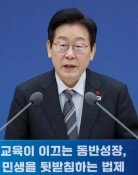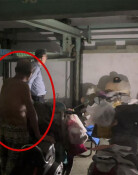As Third Round of Six-party Talks Begin, Terminology Issues Take Precedence
As Third Round of Six-party Talks Begin, Terminology Issues Take Precedence
Posted June. 24, 2004 21:14,
As the third round of the six-way talks opens, the core parties, South Korea, North Korea, and the U. S., came up with feasible Solutions for North Korean Nuclear Weapons. Active discussions took place during the main conference and the core bilateral meetings on the second day of the talks on June 24.
--Intention and reality dont agree with North Korea and the U.S.
The two countries showed determination to make actual progress in this round of talks by presenting seemingly feasible solutions for the first time since the multilateral dialogue framework was set up.
In particular, the U.S. showed some tolerance towards North Korea by replacing the term CVID (complete, verifiable, irreversible dismantlement), which North Korea objects to, with a new term: "comprehensive denuclearization."
However, observers analyze that there is nothing really new in the fundamental reasoning of those two countries claims.
The U.S. reportedly said North Korean nukes should be dismantled in a thorough, transparent and permanent process, which is a basically the same demand as the previous CVID principle, but with different words.
In an effort to clearly send out the message that the purpose of the talks is not just to freeze nuclear weapons but to dismantle them, the U.S. is known to be using the term initial preparatory period instead of the term Nuclear Freeze, which has been favored by North Korea.
North Korea, in the meantime, is known to be holding the same stance as before: that the problem can only be solved after the U.S. abandons its anti-North Korean policies.
North Korea also was reported to be showing its doubts over the U.Ss three-month initial preparation period idea, saying, An actual compensation offer should come first.
--HEU (Highly Enriched Uranium) is still the toughest issue
North Korea has been denying the existence of HED and this round of talks is no exception. Contrary to this, the U.S. is refuting the denial, saying, We are very confident that there is HEU [in North Korea] through both official and unofficial information.
HEU will very much likely become the ultimate obstacle in determining the scope of any North Korean nuclear freeze. China, the host country, and South Korea, a mediator at the talks, are laboring to make a compromise. Even though HEU is not indicated as a subject of the nuclear freeze and evaluation, wouldnt it be possible to check it while doing an on-site investigation?
Hyong-gwon Pu bookum90@donga.com







